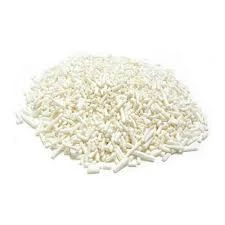
common emulsifiers in food
Common Emulsifiers in Food Enhancing Texture and Stability
Emulsifiers are essential ingredients in the food industry, serving a vital role in improving the texture, stability, and shelf life of various products. They function by reducing the surface tension between immiscible liquids, such as oil and water, allowing for a stable mix known as an emulsion. Without emulsifiers, many popular food items would separate, compromising their quality and appeal. This article will explore some common emulsifiers used in food, their sources, and their benefits in our daily diet.
What Are Emulsifiers?
Emulsifiers are compounds that help mix two or more substances that typically do not combine well, such as oil and water. They possess both hydrophilic (water-attracting) and lipophilic (fat-attracting) properties. This dual nature allows them to stabilize emulsions by surrounding droplets of one liquid in another, thereby preventing them from separating. Emulsifiers can be derived from natural sources or produced synthetically.
Common Emulsifiers in Food
1. Lecithin Lecithin is a natural emulsifier commonly extracted from soybeans, eggs, or sunflower seeds. It is widely used in products such as chocolate, margarine, and salad dressings. Lecithin helps improve the texture and mouthfeel of food while also enhancing its shelf life.
2. Mono- and Diglycerides These are fatty acid derivatives often derived from glycerol and fatty acids. Mono- and diglycerides are found in many processed foods, including baked goods, ice cream, and non-dairy creamers. They help maintain the consistency of these products and improve their texture by preventing crystallization and separation.
common emulsifiers in food

3. Polysorbates Polysorbate 80, a common type of emulsifier, is derived from sorbitol and fatty acids. It is often used in ice creams and salad dressings to stabilize emulsions and maintain a creamy texture. It also helps in increasing the viscosity of sauces.
4. Food Starch Modified food starches can act as emulsifiers by stabilizing oil-in-water emulsions. They are extensively used in products such as gravies, sauces, and soups for thickening, stabilizing, and improving texture.
5. Casein and Whey Proteins Proteins from milk, such as casein and whey, also serve as effective emulsifiers. These can be found in dairy products, sauces, and even in some meat products. They help improve the texture and stability of foods while also contributing to their nutritional profile.
Benefits of Emulsifiers
Emulsifiers offer several advantages in food preparation and preservation. Firstly, they enhance the stability of food products, ensuring that flavors and textures remain consistent throughout their shelf life. This stability is particularly important in processed foods, where ingredients might otherwise separate or degrade. Secondly, emulsifiers improve the mouthfeel of food, making products more appealing to consumers. Lastly, they can reduce the need for excessive fats or oils, thereby contributing to healthier product formulations.
Conclusion
Emulsifiers play a crucial role in the food industry, enabling the creation of a wide variety of flavorful and texturally appealing products. From natural sources like lecithin to synthetic options like polysorbates, these compounds enhance the stability and quality of our food. Understanding the role of emulsifiers can help consumers make informed choices about the products they consume, knowing that these ingredients contribute to the overall sensory experience of eating. As food technology advances, the exploration of new and more efficient emulsifiers continues to evolve, promising exciting developments for the future of food.
-
Sodium Dichloroisocyanurate Safety Handling ProtocolsNewsJul.29,2025
-
Mining Chemicals for Copper Extraction Processes GuideNewsJul.29,2025
-
Fertilizer for Sale Shipping and Storage TipsNewsJul.29,2025
-
Dimethyl Disulfide as Sulfurizing AgentNewsJul.29,2025
-
Benzotriazole Safety Data Handling and Storage GuidelinesNewsJul.29,2025
-
Ammonium Bicarbonate Safety Handling Storage GuidelinesNewsJul.29,2025
-
The Transformative Role Of Trichloroisocyanuric Acid in Water TreatmentNewsJul.23,2025
Hebei Tenger Chemical Technology Co., Ltd. focuses on the chemical industry and is committed to the export service of chemical raw materials.
-

view more DiethanolisopropanolamineIn the ever-growing field of chemical solutions, diethanolisopropanolamine (DEIPA) stands out as a versatile and important compound. Due to its unique chemical structure and properties, DEIPA is of interest to various industries including construction, personal care, and agriculture. -

view more TriisopropanolamineTriisopropanolamine (TIPA) alkanol amine substance, is a kind of alcohol amine compound with amino and alcohol hydroxyl, and because of its molecules contains both amino and hydroxyl. -

view more Tetramethyl Thiuram DisulfideTetramethyl thiuram disulfide, also known as TMTD, is a white to light-yellow powder with a distinct sulfur-like odor. It is soluble in organic solvents such as benzene, acetone, and ethyl acetate, making it highly versatile for use in different formulations. TMTD is known for its excellent vulcanization acceleration properties, which makes it a key ingredient in the production of rubber products. Additionally, it acts as an effective fungicide and bactericide, making it valuable in agricultural applications. Its high purity and stability ensure consistent performance, making it a preferred choice for manufacturers across various industries.











